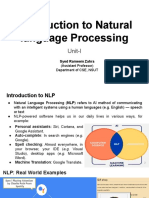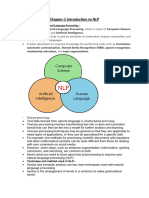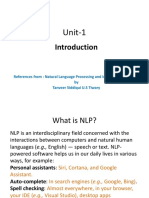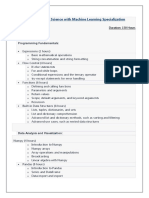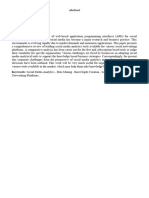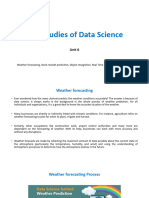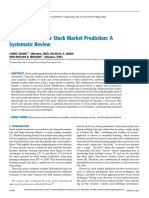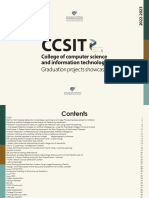0% found this document useful (0 votes)
23 views9 pagesModule 1.1
Lecture Notes for Natural Language processing
A brief history of natural language processing, language challenges,
applications, classical vs statistical vs deep learning-based, Basic concepts in
linguistic data Structure: Morphology, syntax, semantics, pragmatics,
Tokenized text and pattern matching-Recognizing names, Stemming, Tagging
Uploaded by
Abd XyCopyright
© © All Rights Reserved
We take content rights seriously. If you suspect this is your content, claim it here.
Available Formats
Download as PDF, TXT or read online on Scribd
0% found this document useful (0 votes)
23 views9 pagesModule 1.1
Lecture Notes for Natural Language processing
A brief history of natural language processing, language challenges,
applications, classical vs statistical vs deep learning-based, Basic concepts in
linguistic data Structure: Morphology, syntax, semantics, pragmatics,
Tokenized text and pattern matching-Recognizing names, Stemming, Tagging
Uploaded by
Abd XyCopyright
© © All Rights Reserved
We take content rights seriously. If you suspect this is your content, claim it here.
Available Formats
Download as PDF, TXT or read online on Scribd
/ 9

















